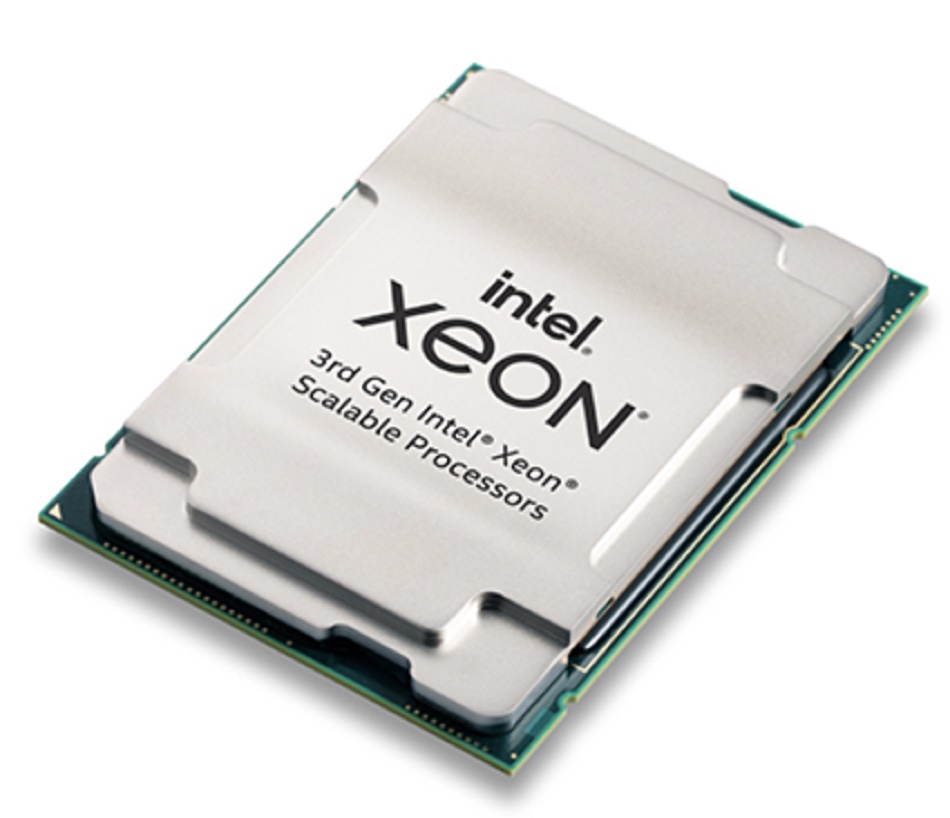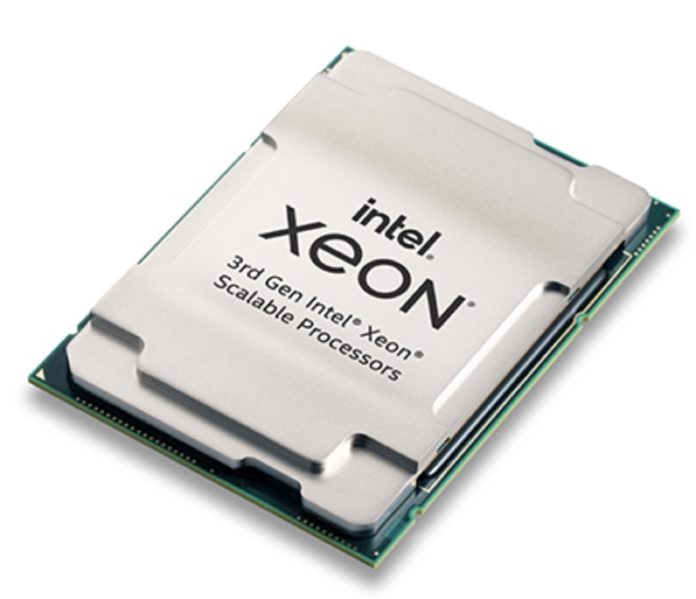The big enterprise hardware event this week centres on Intel’s Ice Lake Xeon processors, with HPE saying its Synergy composable system will support Ice Lake compute nodes. We envisage a sequence of rolling upgrades across the industry’s HCI and external storage systems as suppliers adopt Ice Lake Technology.
Following on from last month’s launch of Fungible’s data centre processor, IDC has written a report forecasting the rise of composable, disaggregated systems, like Fungible’s.
Synergy with Ice Lake
HPE’s Synergy composable server will support Intel’s gen 3 Xeon Ice Lake CPUs, giving it a boost in processing power.
Synergy provides servers dynamically composed for workloads from pools of physical and virtual compute, storage, and network fabric resources. When the workload completes the components are returned to the pools for re-use.
The Synergy 480 Gen 10 plus is a 2-socket compute module with up to 40 per cent more than performance than gen 2 Xeon servers due to a faster CPU with up to 40 cores, 8 rather than 6 memory channels, use of the PCIe Gen 4 bus, and support for Optane PMem 200 Series vs the earlier PMem 100 drives.
The 480 Gen 10 Plus will be available in the summer.
Synergy systems are available as a service through HPE GreenLake.
Ice Lake, storage controllers and HCI
Blocks & Files expects hyperconverged infrastructure hardware suppliers and external storage system suppliers to announce powerful new products using Ice Lake gen 3 Xeon processors in the next few months.
Ice Lake CPUs have up to 40 cores, compared to gen 2 Xeon’s 26-core maximum and a third more memory channels than gen 2 Xeons; enabling 2TB of DRAM per CPU. These new processors also support the PCIe Gen 4 bus; twice the speed of PCIe Gen 3.
Inspur says its M6 servers, which use Ice Lake, have overall storage density and IOPS (input/output operations per second) scaled up by 3 times and 3.2 times, respectively over its gen 2 Xeon servers.
All-in-all, this should enable at least 30-40 per cent more virtual machines supported in an HCI node, compared with today’s gen 2 Xeon boxes. HPE has confirmed to us that HPE SimpliVity HCI systems will support Ice Lake.

Object storage nodes using Ice Lake servers should get a similar boost in power as will scale-out filer nodes. External block arrays and unified block+file arrays should also receive a boost in power. We could expect raw capacity per controller to increase quite substantially and data reduction speed to accelerate as well.
Purpose-built back up appliances, such as Dell EMC’s PowerProtect line, should also be capable of significant performance and capacity Ice Lake boosts. Expect a continual sequence of Ice Lake updated storage and HCI systems over the next few quarters.
IDC composability report
IDC analysts have detected a divide that is opening up between current and next-generation workloads. They say composable, disaggregated systems can bridge the gap.
The IDC report ‘Composable/Disaggregated Infrastructure Systems: Catalysts for Digital Transformation’ explains that current workloads “assume infrastructure resiliency and require computing technologies such as virtualization and clustering that provide portability and transparently preserve application state. They also depend on external shared storage arrays that provide multiple layers of resiliency and redundancy.“
In contrast, next-generation and cloud-native workloads “are designed to be horizontally scalable, with state maintained in resilient data layer processes provided by the infrastructure itself. They are designed to run on industry-standard computing platforms and inside lightweight application containers and carry no bias toward specific silicon architecture.“
IDC’s report was produced by IDC Custom Solutions and is being distributed by Fungible, a maker of function-offload accelerators.
The report authors declare that “emerging composable/disaggregated infrastructure solutions provide the necessary scale, agility, and flexibility needed for cohosting current-generation and next-generation workloads on a common data centre infrastructure architecture.”

Composable/disaggregated infrastructure is based on “special silicon engines called function-offload accelerators (FAs) (also called data processing units or DPUs and SmartNICs) to disaggregate compute, storage, and networking resources into shared resource pools, which in turn can be allocated to workloads on demand in a software-defined manner.”
Shorts
Alluxio in collaboration with Intel has announced the availability of an in-memory software acceleration layer with 3rd Gen Intel Xeon Ice Lake CPUs Optane persistent memory (PMem) 200 series drives. It’s aimed at analytics and AI pipeline workloads and uses Optane’s Storage over App Direct feature.
Research outfit Counterpoint says average smartphone NAND flash capacity crossed the 100GB mark in 2020 for the first time. It was 140.9GB in IOS phones in the fourth 2020 quarter but 95.7GB in Android phones during the same period.
Google Database Migration Service is available to support enterprises migrate their databases and other business IT infrastructure to Google’s public cloud. Freedom Financial Services used it and the Google Kubernetes Engine (GKE) to migrate its 1TB MySCQL database to Google’s Cloud SQL in 13 hours.
M-Files, an information management company, today announced the acquisition of Hubshare and its secure information exchange platform to bolster external content file sharing and collaboration.
Pavilion Data Systems is partnering with Graphistry to supply data analytics functionality using Nvidia Magnum IO and GPUDirect technologies. Graphistry has integrated data UI tools like Jupyter notebooks, Streamlit dashboards, and Graphistry visual analytics with the Nvidia RAPIDS GPU ecosystem (Dask_cuDF, GPU Direct storage, DGX A100) and with the Pavilion HyperParallel Data Platform.
Platform9 has updated its Platform9 Managed Kubernetes(PMK) product with IPv6 support for 5G deployments. It’s claimed to deliver near line-rate performance for network packets.
SaaS business Redstor has announced new Azure services. There is an AI engine to detect malware, and the ability to back up and recover Kubernetes environments on Azure. Redstor can also migrate and recover full systems to Azure from any cloud or data centre.
ScaleOut Software has released an on-premises version of its ScaleOut Digital Twin Streaming Service with all of the analytics and visualisation tools available from its Azure-hosted cloud version. It enables customers to organisations develop and deploy streaming analytics applications on their own servers and so obviate public cloud security concerns.
Cloud storage supplier Wasabi is partnering with Atempo to offer the Tina backup and restore functionality across physical and virtual servers for applications, databases, NAS, Office 365, and more.
The Linac Coherent Light Source (LCLS) at the Stanford Linear Accelerator Centre (SLAC) National Accelerator Laboratory has deployed WekaIO filesystem software to store data for its LCLS Free Electron Laser (FEL) X-ray snapshots of atoms and molecules. These provide atomic resolution detail on ultrafast timescales to reveal fundamental processes in materials, technology, and living things.








